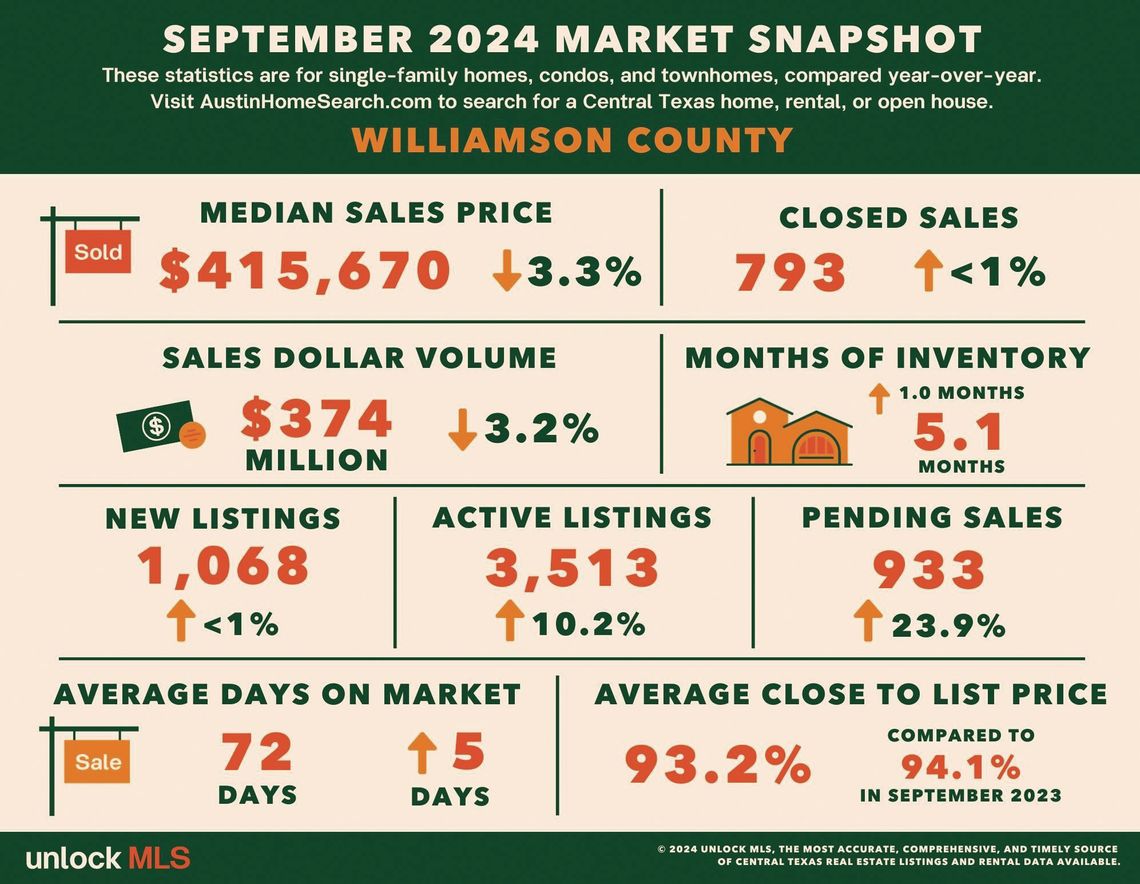Homes, apartments, rental rooms, manufactured housing — options grow as workers and residents flock to region
While an East Williamson County building boom of houses, apartments and condos initially saw a slow rollout, a host of projects are expected to give buyers more choices to rent or buy starting as early as next year.
So far, Hutto, at 42,000 inhabitants (which is more than twice the population of its eastern neighbor Taylor), has aggressively been approving housing developments.
“New housing supply could move the needle between Taylor and Hutto when it comes to new residents,” said Clare Knapp, housing economist for the Austin Board of Realtors and Unlock MLS.
Although thousands of area jobs are being created across the semiconductor industry, logistics operations and manufacturers of everything from falafel to beauty products, much of the pressure on the local housing market comes from people working in Austin and northeast Travis County who are looking for more affordable house prices.
“There’s a saying, ‘Drive until you qualify,’” Knapp said of house and apartment seekers pushing out beyond the urban core and immediate suburbs to find something with a mortgage they can afford.
So far, the inventory of homes for sale has been curtailed by the time it has taken to put together development deals with East Wilco cities, the creation of special districts and the ability to get water and wastewater services to where neighborhood investors want to build.
Projects at various stages of planning, approval and construction in and near Hutto will eventually add thousands of single-family homes and thousands of multifamily units in everything from sprawling apartment complexes to fourplexes.
In the last few months there has been movement on several projects.
Among the Hutto projects is Emory Crossing, a Taylor Morrison Community that is one of the larger subdivisions in Hutto with hundreds of lots sold, 48 now on the market for building and 13 new houses ready for move in. Dozens more lots will be made available to meet demand in future phases.
Huggins Crossing is a proposed 113acre development along Toll Road 130 that would include industrial warehouse space and retail in its first phase and 600 apartment units in 2026 or 2027.
Meanwhile, the Cottonwood development at U.S. 79 and CR 132 hangs in the balance. Developer Midway claims planned elevated lanes of CR 132 to cross 79 will limit its ability to place retail buildings on parts of the property. About 90 acres could be developed for the retail and/or residential units over the next one to two decades.
Cotton Brook on 132 is awaiting final city approval for its public improvement district that would allow the PID to charge property taxes on the 262 lots in addition to city taxes to pay for infrastructure.
Another PID for the nearly 1,100 planned houses at Prairie Winds near the anticipated Lee Martinez Elementary School on FM 1660 North also was recently approved.
One of the newest developments to bring more housing to the area was OK’d by the Hutto City Council in September.
The Meadow Brook subdivision in a newly annexed portion of southeast Hutto on 1660 South will have as many as 500 houses on about 67 acres and include some retail separated by 18 acres of green space.
In August, the city approved the use of about 372 acres near Hutto’s 1,400-acre commercial Megasite to be used, half for commercial and the other half for houses and apartments. That is likely to get started in 2026.
Meanwhile, just down the road, Taylor is starting to gain ground with new residential options coming to the city even after several developers used a recent state law to pull their land out of the extraterritorial jurisdiction.
About 1,060 new units are in the works for a mixed-use development by Megatel Austin Taylor LLC. The project would have 122 single-family homes and 153 carriage-house apartments, and the bulk would be high-density dwellings with nearly 800 units.
The 100-acre Turner Springs development announced early this summer by developer Insite will bring about 700 apartments to the area along with 47 large-lot estates, 119 more traditional single-family homes and another 77 units in the form of cottages, townhomes and live-work residences.
The Castlewood subdivision at 79 and CR 973 ultimately will have 239 single-family homes and 300 apartment units. The Grove at Bull Creek is building toward 379 houses on 93 acres. And Parkside Townhomes represents another 75 housing units to feed the coming need.
While housing prices in Williamson County aren’t as overheated as they were two and three years ago as historically low mortgage interest rates spurred a buying frenzy, demand to be near Taylor’s and Hutto’s growing job opportunities will intensify demand.
Knapp said the new housing supply making its way onto the market “should help stabilize prices” as demand grows. She said there are some indications that Milam County towns to the east such as Thorndale and Rockdale are experiencing expansion that wouldn’t have happened without Samsung Electronics Co. Ltd. investing what could be as much as $44 billion in advanced semiconductor foundries in Taylor.
The $17 billion first phase of Samsung Austin Semiconductor is now under construction.
In September, the median sales price of a house in Williamson County dropped 3.3% to $415,670 compared to the same month last year, according to data collected by the Austin Board of Realtors and Unlock MLS.
Closed sales were up slightly to 793 for the month and the months of inventory on the market was up a full month to 5.1 months compared to last year, which indicates a lean toward a buyer’s market when it comes to negotiating price.
Across the Austin-Round Rock-San Marcos region, ABoR reported a September decrease in the median sales price of 6.6% to $425,000, while the number of sales declined 2.6% to 2,283 for the month compared to last September.
They also weren’t moving as fast. Average days on the market increased by 10 days to 79 days.
Those prices are still too rich for many workers in the area with very little so-called affordable housing being built and interest rates still high.
“This is the most interesting market for real estate we’ve seen in a long time,” said Kendall Garrison, CEO of Austinbased Amplify Credit Union. “Affordable housing is being ignored for a lot of reasons including the cost of labor and hard goods.”
Garrison said the average household income in the greater Austin area is about $120,000, which makes buying a house for $450,000 at a high interest rate tough to do.
A better mix of different types of living spaces is part of the answer to create housing opportunities for people. To that end, Amplify is lending to the company behind tiny homes development called the Mustard Seed. The community just east of Round Rock offers 600- to 700-square foot rental houses.
“We think that’s the future of affordable housing in Texas,” Garrison said. The credit union is backing more tiny home communities in Houston and is in discussions to do more in Central Texas, including East Williamson County.
A Facebook messenger group called “Working at Samsung in Taylor” has a very active ongoing thread called “Room Rentals Near Taylor.” House and apartment owners are offering up rooms to shelter-hungry temporary Samsung workers and some of the numerous construction workers on the foundry project or that of a Samsung supplier.
A room in a house with a shared bathroom can run $600 to $800, while a two-bedroom mobile home rental can cost $1,200 or more a month. Those closest to Taylor get the best prices, while those further north, south and west don’t demand as much because the shorter commute is key, according to some workers’ comments.
One answer to affordable housing is to develop infill development, vacant lots or repurposed buildings in small city downtowns, said Pawel Hardej, principal of Metropolitan Development Co. in Austin.
Metropolitan announced in September it is building a mixed-used project called The Ferguson in downtown Taylor on Second Street. It will include eight garden homes, 16 townhomes, 60 condos and five live/work homes. The smallest is 575 square feet and the largest is 1,534 square feet starting at $200,000, a price point nearly impossible to find for new construction in Texas.
Hardej said he started looking for property in the Taylor area as soon as the news broke that Samsung had chosen the city for its stateside expansion. The architect, urban planner and historic preservationist, who worked for years on projects in Chicago, said, “I was stunned by the quality of the old buildings in Taylor” and how walkable it is.
“I thought, ‘Why the hell are we spending time on the outskirts of Taylor when we could go downtown with water, sewer and other services already there?’” he said.
Not only does the downtown development meet the city’s comprehensive plan to develop the city core instead of pushing outward into the fields, but it is part of Hardej’s strategy to do affordable living spaces.
Most apartment buildings charge such a high rent “because they’ve all gone nuts with the amenities. They have to have a swimming pool, a day spa and a fitness room. The ration of living space to amenities has gotten out of control and is expensive to build and maintain,” Hardej said.
At The Ferguson “downtown is the amenity and keeps the cost down,” he added.




Comment
Comments